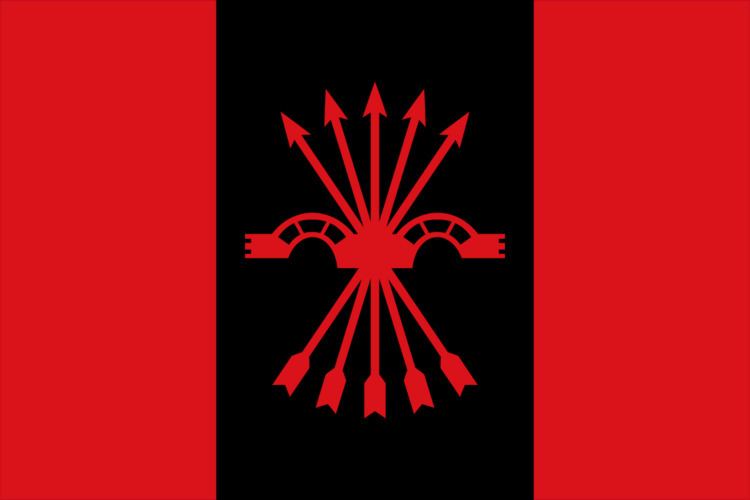Founded January 26, 1940 Office location Madrid, Spain | Date dissolved December 6, 1977 Country Spain | |
 | ||
Full name Spanish Trade Union Organisation Native name Organización Sindical Española | ||
The Spanish Trade Union Organisation (Spanish: Organización Sindical Española), commonly known as Vertical Syndicate (Sindicato Vertical), was the only legal trade union organisation in Francoist Spain (1940–1975), and a main component of the Movimiento Nacional Francoist apparatus. Previous unions, like the anarchist CNT and the socialist UGT, were outlawed and driven underground.
History
The OSE was founded in 1940, as a result of various legislations passed by the new regime. OSE held its first congress February 27, 1961 – March 4, 1961. The organisation itself claimed to have roots in the trade union activity of the National-Syndicalist Workers Central (CONS), founded in 1935. CONS had been, as a result of the process of unification of falangists and traditionalists in 1937, fused with the National-Syndicalist Employers Central (CENS) into the National-Syndical Centrals (Centrales Nacional-Sindicalistas). The idea of organising workers, technicians and employers within one "vertical" structure was also integrated in OSE, and the CNS were incorporated into OSE.
At the very beginning of Franco's regime, wages were directly fixed by the state and only later could workers and employers agree upon their wages through this vertical unio. This organisation was the practical consequence of the fascist ideal for industrial relations in a corporate state. In it, all the workers, called "producers," and their employers had the right to choose their representatives through elections.
In this organisation, workers and employers supposedly bargained equally. Strikes were forbidden and firing a worker was very expensive and difficult, as the fascism had "bettered capitalism" and had "succeeded in harmonically balancing workers' and employers' interests". In reality, candidates for these elections had to be approved by the regime and all the process was heavily controlled, as fascism had a very interventionist policy towards the labour market: full employment for men, even at the expense of low wages or inflation, almost no right to work for married women and no unemployment benefits at all.
The Communist Party of Spain (absolutely forbidden then) considered that the "union" was heavily lopsided in favour of capital but was there to stay, and decided to infiltrate it with their candidates in order to achieve practical gains for the workers' conditions. This was the basis for the communist Workers' Commissions.
At the very end of Franco's regime, the sindicato vertical lost its always limited power and illegal trade unions gained force. This led some pragmatic employers to deal with these illegal unions and forsake the "vertical" one. It disappeared in 1977, during the Spanish transition to democracy.
